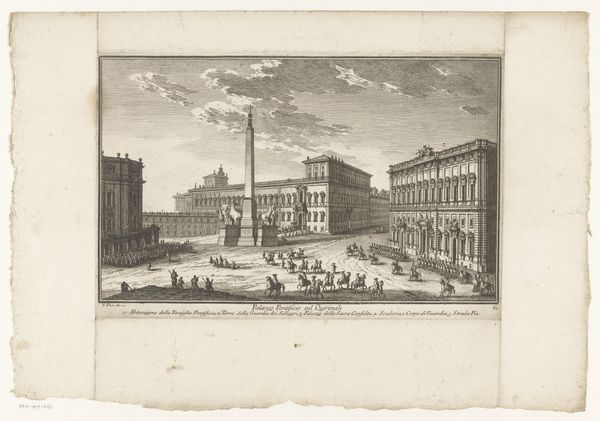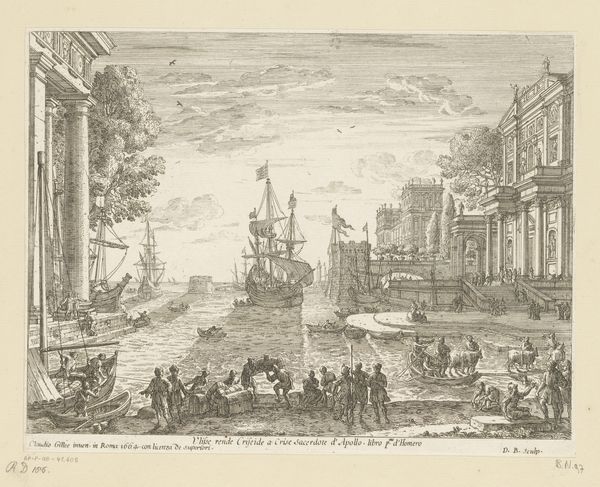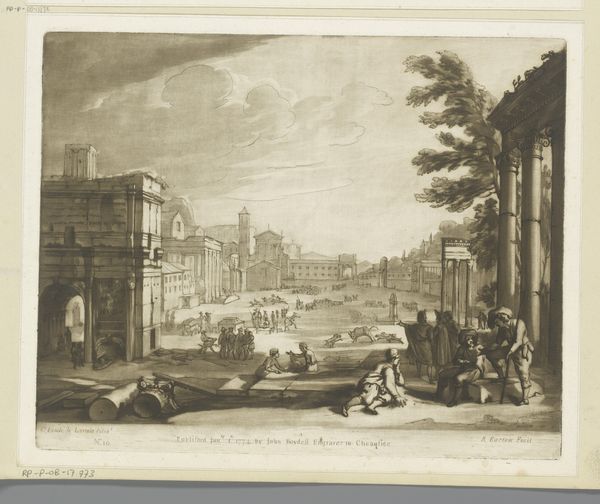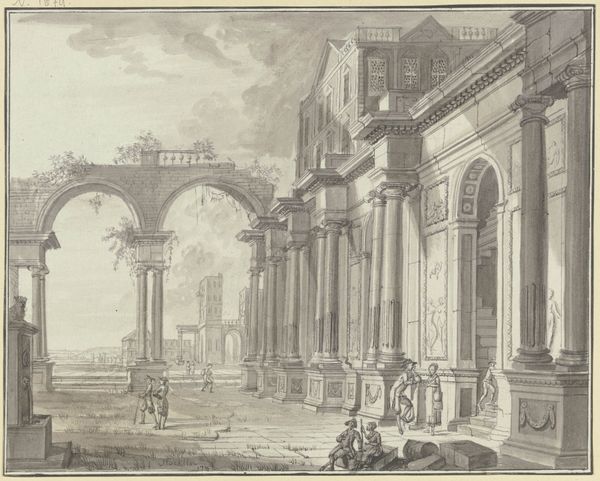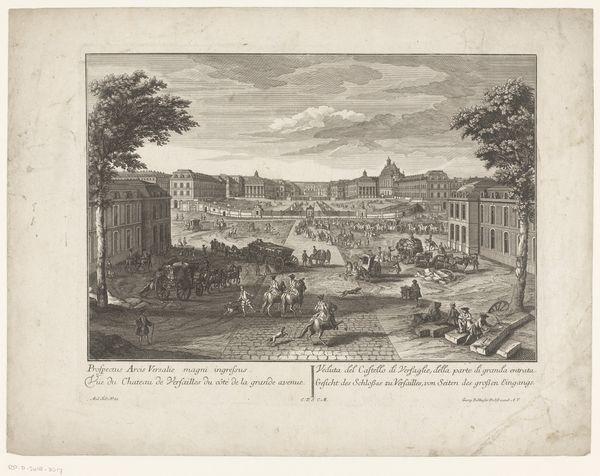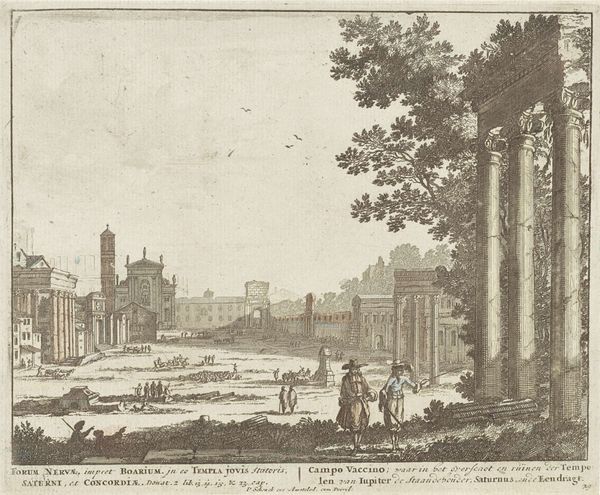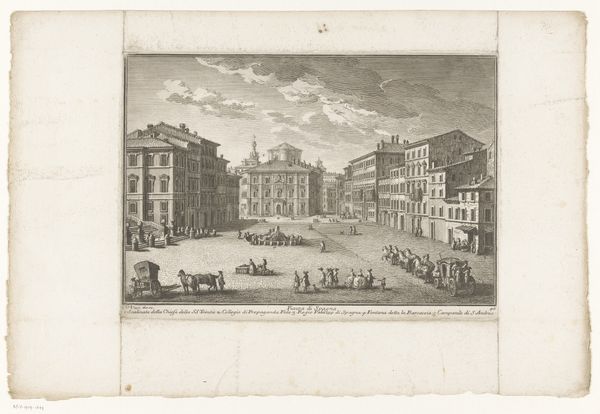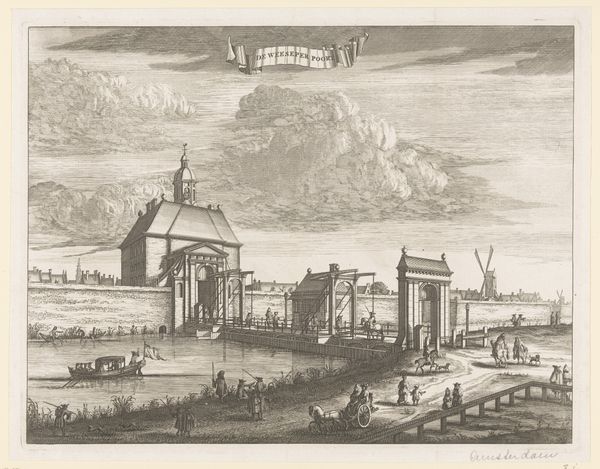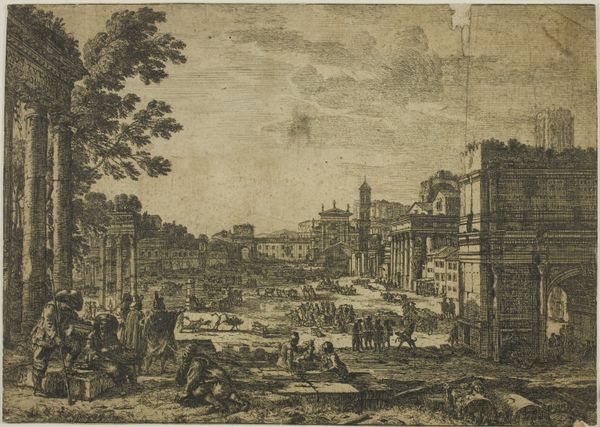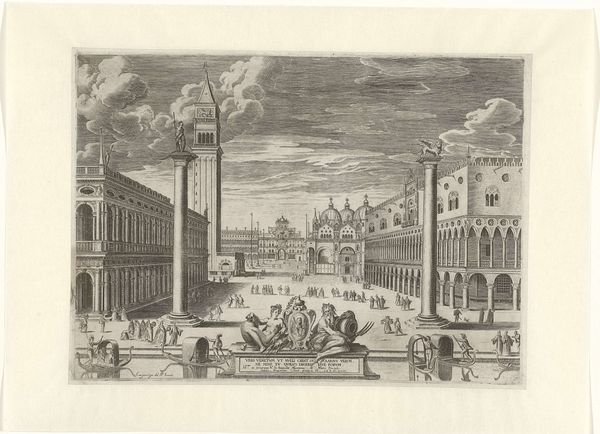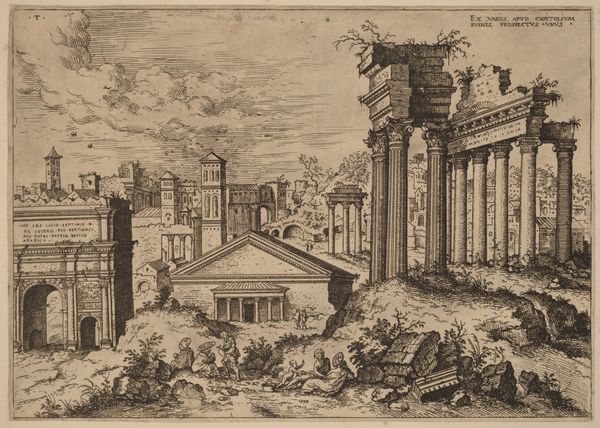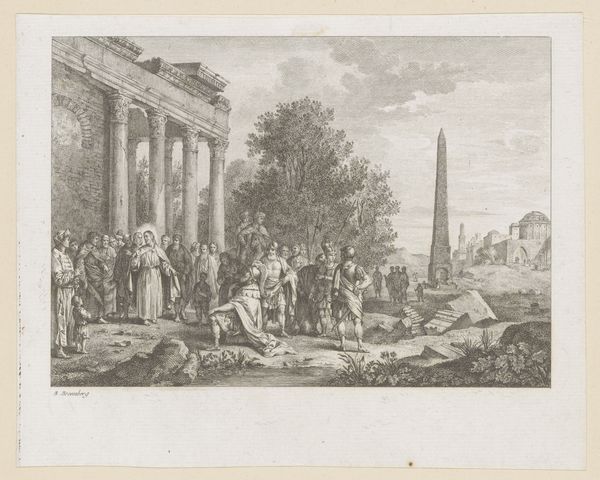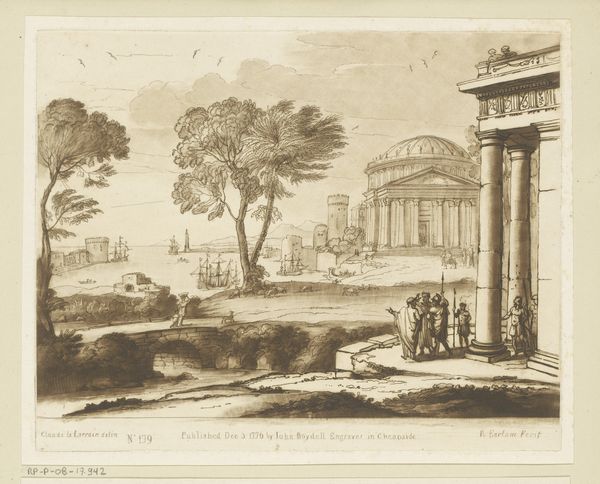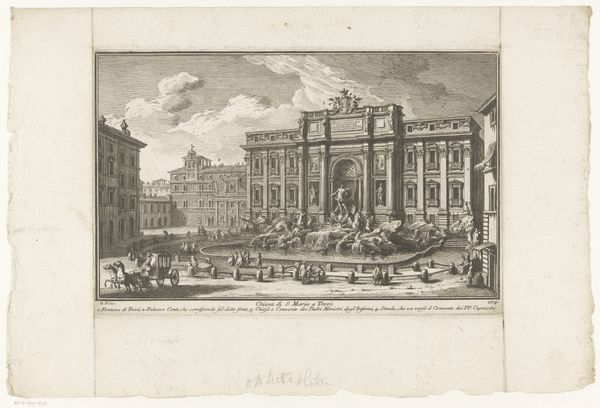
print, engraving, architecture
#
baroque
# print
#
landscape
#
cityscape
#
history-painting
#
engraving
#
architecture
Dimensions: height 417 mm, width 527 mm
Copyright: Rijks Museum: Open Domain
Curator: This print, dating from between 1704 and 1724, is titled "Gezicht op het Forum Romanum," or "View of the Roman Forum," rendered by an anonymous artist with the technique of engraving. Editor: The scene is teeming, bustling with figures large and small. It's hard to say, but the vast space is imbued with a real sense of decline, almost like looking at ruins inhabited, not preserved. Curator: Precisely. The very title "Campo Vaccino"—literally "cow field"—hints at this decay. Despite the noble ruins of temples and public buildings depicted here, for centuries the Roman Forum was actually used as a pasture and a marketplace. What's being conveyed is that contrast between its glorious past and its rather mundane present. Editor: So, we're not just seeing a landscape, but a kind of commentary on power, transformation, even erasure. I wonder what audiences at the time made of viewing a former center of imperial strength reduced to something quite ordinary? It’s like history itself is flattened, isn't it? This teeming marketplace dominating the noble ruins. Curator: Consider also the role of Amsterdam and the engraver in mediating this image. This isn't necessarily how a Roman might have viewed or wanted others to view Rome. There’s a level of social critique. The artist is looking at Rome from a distinctly northern European, probably Protestant, perspective. What did the image represent, perhaps even say about Dutch identity in the Baroque era? Editor: It speaks volumes about the act of witnessing itself. This image becomes not only about Rome, but also about who is looking, who gets to represent this historical and cultural decline, and, crucially, who benefits from circulating it. The casual inclusion of people amidst grand monuments says something about whose histories are valued. Curator: It is important to remember art exists, and can only be interpreted, within its total milieu. Editor: Right, it invites us to question who decides what is seen, remembered, and forgotten in the narratives we tell ourselves about the past.
Comments
No comments
Be the first to comment and join the conversation on the ultimate creative platform.
